
08.04.2019
By Sorcha Stephens and Natalia Kononova.
Global industries are being driven more and more by data with the number of robots used across industries rising. The dairy industry is not an exception to this trend. Over the last few years we have seen a significant increase in the use of dairy management technologies on larger farms with a 500+ head count.
The dairy industry is also affected by other trends such as fluctuating milk prices as well as the average size of farms increasing. To be able to control reproduction on farms and improve effectiveness and efficiency, farm management can’t operate in the same way it has in the past. Farms must adopt new technologies and have access to data that helps to better manage herd health. This data could be in the form of pedometers, temperature controls, ovary scoring, pregnancy rates and fetal ageing, along with many other daily touch points on farm.
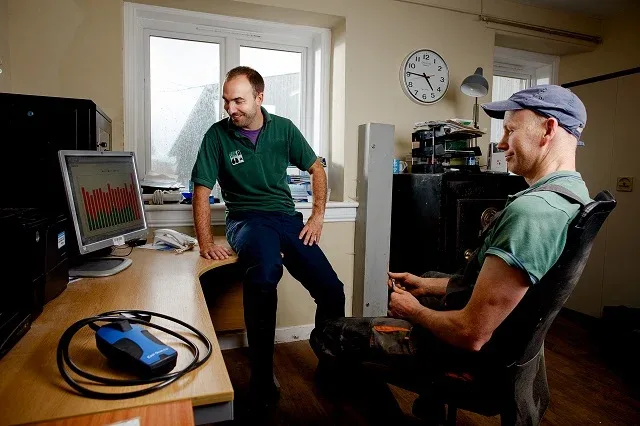
As the number of animals on farms increases, farm management needs to look at overall herd health, rather than just accessing an individual cow. This involves collating all the above data in to one system, such as a dairy management system (DMS), where it can be effectively analysed and managed.
Veterinary ultrasound is one of the tools for managing reproduction, but it also generates sets of valuable data that currently are not recorded automatically in DMS. Quite often this data is recorded on a piece of paper that can easily be lost or misplaced. Farms are typically noisy environments, and it is quite common for a vet to ask the farmer to record that the cow is pregnant, but what happens if the diagnosis is recorded incorrectly? This error costs the farm but also questions the accuracy of the vet’s work.

As dairy management norms change, so does the role of the vet. Depending on the country and the size of the farm, vets are sometimes employed by a farm or farm-group, with the vet providing a consistent, long-term service. Whether the vet is employed by the farm or not, they need to show the value they can add to the farm. Traditionally, in most countries, this value was shown through reproductive work carried out by the vet. However, there is a new trend in the dairy industry where quite often the reproduction work on the farm is being carried out by vet students, lay people, technicians or inseminators. As the dairy industry changes and becomes more and more driven by data, the role of the vet is becoming more one of consulting and interpreting data as well as looking at genomics. By looking at the bigger picture and analysing data, vets can assist the farm manager to improve reproduction rates on the farm. This can also help them to work as a team towards the same goal. To successfully embrace the change, vets need to adopt new technologies that allows them to collect, record and analyse this data.
On the back of interviewing industry experts, we carried out a global survey asking professionals involved in the dairy industry what the role of the farm vet is and what they think the dairy industry will look like in the future.
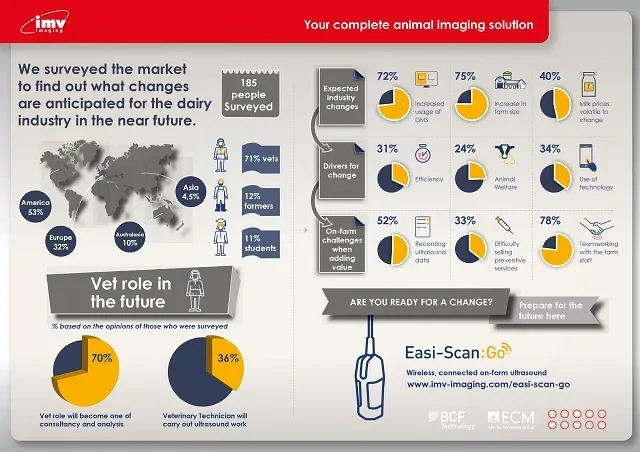
We would like to thank the 185 people across the world who took part in our survey. With a range of professions completing the survey, we feel we have a comprehensive view on where the industry is headed, with new and experienced vets as well as farmers and contractors having their say.
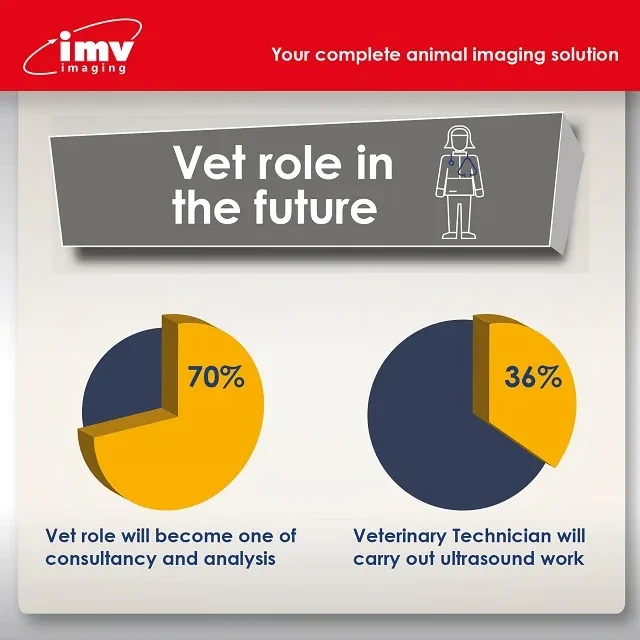
Perhaps the most striking statistic from our set of results is that 70% of those we surveyed believed that the role of the farm vet will become less hands on, instead focusing on offering a consultancy and analysis-based service. This might involve looking at dairy management systems over a longer period, identifying any trends that occur and situations that could be better managed with a change in environment or preventative medicine, as an example. With this change in role, 36% of those surveyed believe it will no longer be qualified veterinarians carrying out routine ultrasound work, and veterinary technicians, lay people and contractors will take over this side of the role.
We questioned what the key industry changes are or will be, what is driving these changes, and what challenges are faced on farm, particularly when it comes to showing how you are adding value.
With regards to expected changes, the majority of those surveyed expect an increase in the average size of farms leading to an increased use in DMS allowing for a more efficient running operation with such large herds.
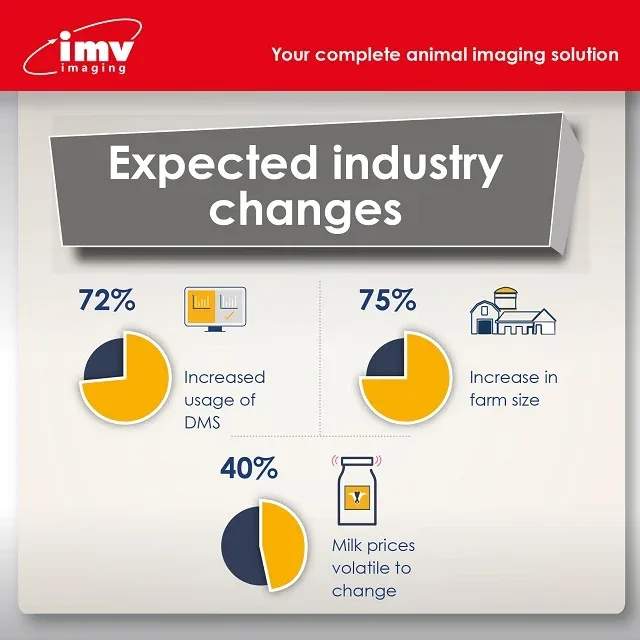
The drivers for these changes have been identified as efficiency, higher standards of animal welfare, as well as an increased use in technology. However, the on-farm challenges identified seem to directly hinder the opportunity to move with these changes. Paper recording of ultrasound data does not embrace an increased use of technology, nor does it improve efficiency levels. Preventative medicine sales are also seen as challenging, not conducive with calls for better animal welfare standards. The most overwhelming statistic in this area though was team-working with farm staff, with 78% of those surveyed commenting that it remains a challenge, again not supporting efficiency improvements.
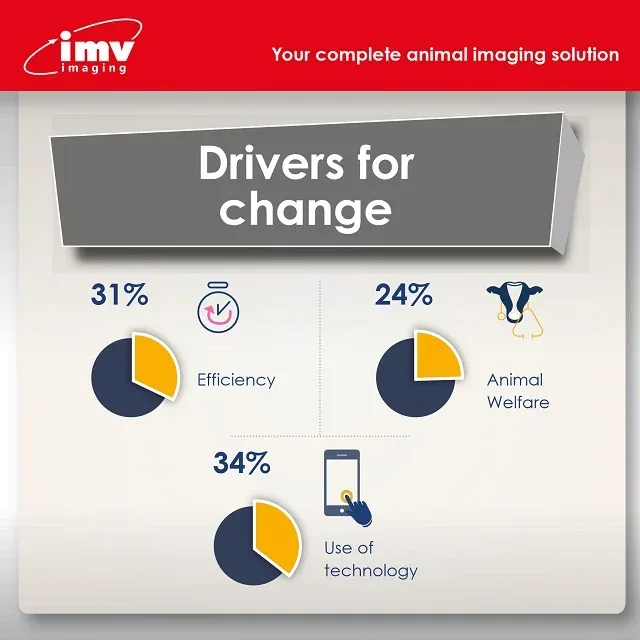
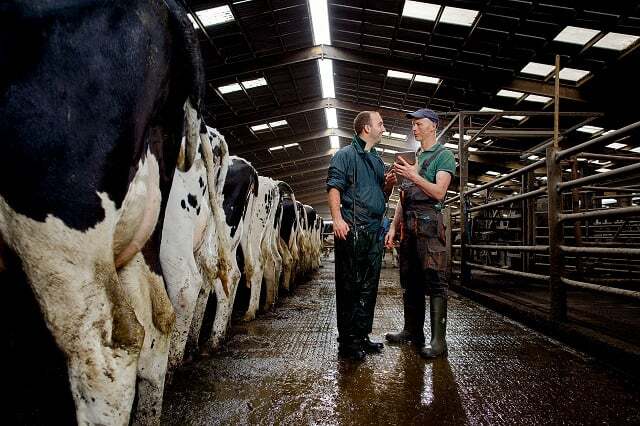
At IMV imaging, we have looked at these results and channelled them in to an ultrasound solution that can directly target the challenges identified. The Easi-Scan:Go is a new innovative wireless ultrasound scanner, designed to allow vets to collect data through specifically developed applications and prepare vets for the future. This data is captured cow-side, offering confirmation to the vet of what has been recorded. To learn more, explore the Easi-Scan:Go range here.
Be Connected. Be Smart. Let’s Go! With the new Easi-Scan:Go.
